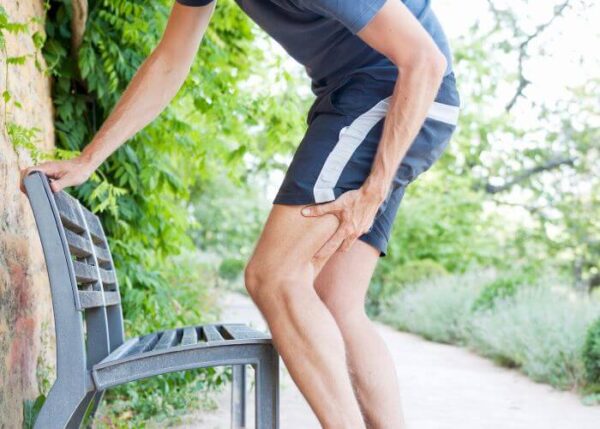Proximal Hamstring Repair Surgeon

Are you an athlete who participates in sports that involve a lot of running and jumping or sudden stopping and starting? If so, you may be at risk of tearing your proximal hamstring. A torn or injured hamstring can lead to poor leg control and difficulty walking. Significant structural damage of the hamstring requires surgery to repair the injury. Hamstring repair surgeon, Dr. Jervis Yau provides diagnosis and both surgical and nonsurgical treatment options for patients in Santa Barbara who have suffered a torn or injured hamstring. Contact Dr. Yau’s team today!
Proximal Hamstring Repair Overview
The hamstring muscle group consists of three muscles: the biceps femoris, semitendinosus and semimembranosus. All three originate from the ischial tuberosity of the pelvis and inserts below the knee with the biceps femoris attaching on the fibular head and the semimembranosus and semitendinosus to the medial tibia. Injuries typically occur from a forced hip flexion with simultaneous knee extension. Complete avulsions result in significant or complete loss of hamstring function depending on how many of the tendons are avulsed. This can lead to poor leg control and difficulty walking. Because of the significant structural damage and resultant disability, these injuries are often treated with surgical repair. Santa Barbara, Goleta, Santa Maria and Ventura, California orthopedic hip surgeon, Dr. Jervis Yau is highly experienced in performing proximal hamstring tendon repairs.
What is the Treatment for a Hamstring Tear?
Treatment of proximal hamstring tears begins with an accurate diagnosis. Through physical exam and MRI review, Dr. Yau will determine whether or not surgery will be indicated. If the injury does not involve a full thickness tear of the tendon with retraction, Dr. Yau will prescribe a course of conservative treatment including rest, activity modification, and physical therapy.
The clinical indications for surgical repair are complete hamstring avulsion of all three tendons associated with significant retraction. Various studies have shown that if surgery is performed shortly after injury, the overall outcome is superior to those who are delayed by several months. Acute surgical repair is performed by suturing the torn tendons to anchors placed in the anatomic footprint on the ischial tuberosity.

Recovery and Rehabilitation Following Proximal Hamstring Repair
The rehabilitation after repair consists of 4 phases. Phase I focuses on early range of motion and protection to allow for healing. Phases II and III include gait training, flexibility, core strengthening and restoring hamstring function. Early in the strengthening phase, most exercises are done with both legs simultaneously in a short arc of motion either at the hip or the knee. Late in Phase III, most exercises are done in a single leg fashion with movement and force occurring at both the hip and knee simultaneously. In the phase IV of rehabilitation, the focus shifts to the control of high speed movement and the development of power. This is the return of sport phase.
Proximal Hamstring Repair Recovery Time
Many patients can expect a full return to normal athletic activities in four to six months if the rehabilitation guidelines are strictly followed. However, not all athletes will return to sport after this type of injury due its significance. Return to sport depends on the nature of the sport, severity of initial injury, timeliness of surgical intervention and compliance with the post-operative rehabilitation program. Studies report approximately 75% of athletes return to their sport in some capacity.
For additional resources on proximal hamstring repair, or for more information on surgical proximal hamstring treatment, please contact the orthopedic office of Dr. Jervis Yau, hip surgeon located in the Santa Barbara, Goleta, Santa Maria and Ventura, California communities.